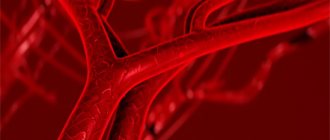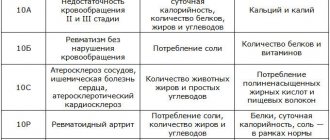Low-grade fever (low-grade fever) is a slight (37 - 37.9'C) increase in body temperature observed over a long period of time (from several weeks). It can be observed continuously throughout the day or occur at certain hours.
Low-grade fever is a symptom of many diseases, and therefore can coexist with different symptoms. In some cases, a persistent increase in temperature is the patient's only complaint. The most common companions of low-grade fever are increased heart rate, weakness, drowsiness, and lack of appetite.
Low-grade fever is primarily a consequence of the restructuring of thermoregulatory processes in the body. It is caused by an acceleration of metabolism or dysfunction of the thermoregulation center due to infectious, allergic or any other influences.
Important! Low-grade fever can be a symptom of a low-grade inflammatory process!
The main diseases manifested by low-grade fever:
- Chronic infectious diseases (chronic tuberculosis, brucellosis, sinusitis, pyelonephritis, parasitic lesions, cytomegalovirus, herpes, mononucleosis, sexually transmitted diseases and many other focal infections in a chronic form);
- Diseases associated with impaired immune response (rheumatism, rheumatoid arthritis, vasculitis, post-infarction syndrome). This group also includes diseases of an allergic nature;
- Malignant neoplasms (leukemia, lymphoma, hepatoma, kidney adenocarcinoma, etc.);
- Diseases of the endocrine system ( pathological menopause, thyrotoxicosis, pheochromocytoma, etc.);
- Diseases of the central nervous system of various etiologies ( traumatic brain injuries, neuroinfections, etc.).
Low-grade fever in children, especially young children, often has no connection with any pathology. It occurs due to the body’s thermoregulation not yet established. Children's body temperature rises after physical activity, overheating, and in infants after eating.
One of the common causes of persistent low-grade fever is psychological and mental stress, as well as stress, accompanied by general poor health, dizziness, and shortness of breath.
Diagnosis and treatment
If you have persistent low-grade fever, you should consult a therapist. At the Medicenter, consultations are conducted by a highly qualified therapist with extensive experience. The doctor will quickly and reliably diagnose the cause of low-grade fever and begin treating the disease, not the symptom!
Before visiting a doctor, the patient is recommended to measure body temperature every 3 hours (excluding sleep time) and record the data for 1-2 weeks. The records must be shown to the doctor. This will help him in collecting anamnesis and drawing up an individual examination plan.
It is advisable for women not to carry out this test during menstruation, because... An increase in temperature may be one of the manifestations of premenstrual syndrome.
Due to the wide range of diseases that occur against the background of low-grade fever, diagnosing its cause presents some difficulties. Particular emphasis is placed on collecting patient complaints, as well as an initial examination. First of all, diseases of infectious etiology are excluded, such as tuberculosis, which is often asymptomatic.
In almost every case, a patient with low-grade fever needs to undergo a general and biochemical blood test, a general urinalysis, electrocardiography, and undergo a chest x-ray. If signs of infection are detected, the doctor conducts a targeted search for the source of infection (virus).
If the doctor has a more clear diagnostic version, he may refer the patient for special studies (gynecological, urological, ultrasound diagnostics of internal organs, blood tests for hormones) or for consultation with a specialized specialist.
Diagnosis and treatment of some diseases that occur against the background of low-grade fever require hospitalization of the patient.
Treatment of low-grade fever with antipyretics is rarely practiced. The underlying cause of the disease is subject to treatment.
Important! If you suspect low-grade fever, you should not delay a visit to the doctor, because This symptom is characteristic of many serious diseases, in particular HIV infection.
If outpatient examinations are not possible, Medicenter doctors make house calls to all districts of St. Petersburg. Trips to the suburbs of St. Petersburg are negotiated separately.
Infectious heart diseases
Gilmanshina Diana Ralifovna
Cardiologist, general practitioner
Infectious lesions of the heart
are a category of diseases whose existence many do not even think about, however, the clinical manifestations of such conditions force them to consult a doctor immediately.
Depending on the level of damage, infectious heart diseases are classified as follows:
• Endocarditis
– damage to the inner lining of the heart, epithelial, as well as the valvular apparatus of the heart.
• Myocarditis
– damage to the middle, muscular layer of the heart.
• Pericarditis
- damage to the outer, serous membrane of the heart, that is, the pericardial sac.
• Pancarditis
– damage to all layers of the heart, an extremely serious and rare condition, which most often acts as a complication of endocarditis, myocarditis or pericarditis.
The main causative agents of infectious heart diseases:
•
Adenovirus.
It is one of the most common viral respiratory tract infections leading to myocarditis in both children and adults.
• Cytomegalovirus (CMV).
It is a virus from the same group as the herpes simplex, chickenpox and Epstein-Barr viruses. CMV can be detected in 50-80% of people over 40 years of age. Cytomegalovirus can live in the human body for years without causing harm. But under a certain set of circumstances it becomes active and poses a danger to the tissues of the heart too.
• Coxsackievirus group B
- an enterovirus and the cause of half of the cases of myocarditis. It occurs with flu-like symptoms for 2-10 days. And after a couple of weeks, heart complications may appear in the form of fever, chronic fatigue and chest pain.
• ECHO viruses
- another group of microorganisms that cause intestinal infections. They may appear as a skin rash and most often affect children. The most common complication of echoviruses is myocarditis.
• Parvovirus B19
- an infection that causes anemia and, as a complication, heart damage. According to statistics, 2-15% of children and 85% of older people have encountered parvovirus. But in people with a healthy body, the infection is often asymptomatic and may go unnoticed altogether.
• Rubella
- a viral infection, especially dangerous for pregnant women if they do not have developed immunity to it. When the rubella virus enters the heart tissue, myocarditis develops.
Any foci of chronic inflammation of a bacterial nature can become a source of infection that is dangerous to the heart. For example, there are known cases of the development of endocarditis due to bacteria living in the mouth and throat of a person. Through damage to the oral mucosa, they enter the bloodstream and thus penetrate the tissues of the heart. Streptococci are especially dangerous in this regard.
Bacteria that attack heart tissue:
•
Streptococcus pneumonia
;
• Staphylococcus aureus
- causes infective endocarditis in almost 100% of cases;
• Enterococcus
;
• Escherichia coli
and etc.
It should be added that damage to heart tissue is not always caused directly by microorganisms. For example, in a study of pneumococcal heart infections in streptococcal pneumonia, it turned out that the bacteria produce the toxin pneumolysin. The microorganisms themselves do not need to enter the heart - myocardial cells die under the influence of pneumolysin.
Fungi are another group of microorganisms that can affect the heart.
. Most often, fungal infections of cardiac tissue develop during long-term antibacterial treatment, for example, after surgery or with prolonged use of venous catheters.
Risk factors for heart infections
Most often, infectious heart lesions develop in people who have a predisposition to their occurrence.
The development of the disease is determined by the presence of such aggravating factors
:
• Congenital or acquired heart defects.
• The presence of reduced immunity due to severe stress, HIV/AIDS, congenital pathologies.
• Cardiac surgery performed (heart valve replacement).
• Carrying out dental procedures.
• Frequent sore throats.
• Use of injecting drugs.
Clinical manifestations of infectious lesions of the heart
Clinical manifestations of endocarditis
The phenomena of endocarditis occur, as a rule, 2-3 weeks after an infectious disease. Most often, with endocarditis, the body temperature rises sharply to high numbers (38-40°C), chills occur, but in some cases the temperature can even be reduced (below 36°C). More specific symptoms of endocarditis include:
• Muscle pain, joint pain, weight loss, weakness, headache.
• Change in skin color – it becomes jaundiced.
• Peculiar hemorrhages occur on the skin and conjunctiva of the lower eyelid.
• Purple-purple spots up to 5 mm in diameter may appear on the palms, feet and torso.
• Small bumps of dense consistency appear on the palmar surfaces of the fingers and soles.
• Heart pain and dry cough may occur.
Clinical manifestations of myocarditis
Infectious damage to the myocardium makes itself felt 1-2 weeks after the first symptoms of any previous infection. The first and most characteristic signs of myocarditis:
• Increased heart rate over 90 beats/minute.
• Chest pain.
• Feeling of interruptions in heart function.
• Shortness of breath.
• High temperature (38-39ᴼС).
If a complication such as heart failure occurs, the described symptoms may be accompanied by swelling in the lower extremities. In a chronic course, symptoms may appear and disappear after a while, after which they recur again.
Clinical manifestations of pericarditis
It should be mentioned that pericarditis has two main forms: dry and exudative. Depending on the form of pericarditis, the symptoms will differ.
With dry pericarditis there are three leading symptoms:
• Severe chest pain, localized in the center, becomes more intense when sneezing, coughing, swallowing and even breathing. The pain is not relieved by the use of nitroglycerin, but is slightly reduced by the use of analgesics (nimesulide, analgin, ibuprofen), as well as by bending the torso forward.
• Pericardial friction noise, reminiscent of crunching snow.
• Changes in the electrocardiogram that can only be detected in a hospital or when visiting an ambulance.
With exudative pericarditis, the symptoms are different:
• Increased heart rate occurs (rate over 90 beats/minute).
• Body temperature rises to 37.5-38ᴼC.
• Severe shortness of breath appears.
• There is a desire to press the body to the knees, as this position alleviates the condition.
• Swelling may occur in the legs and fluid may accumulate in the abdominal cavity.
• Blood pressure decreases below 120/80 mmHg.
If you identify the described symptoms or a group of symptoms, you must seek qualified medical help as soon as possible and report your symptoms to a general practitioner or cardiologist in order to avoid complications that are life-threatening. Further diagnostic tactics and treatment are prescribed only by a doctor!
Prevention of infectious heart diseases:
The main goal of prevention is to prevent infection from entering the heart tissue.
To do this, you need to: • If you catch a dangerous infection, consult a doctor in a timely manner, without allowing the disease to develop complications.
• Control the microflora of your body - where possible.
Any foci of chronic infection are risk factors for heart damage. For example, brushing and flossing regularly reduces the chance of oral infection spreading.
Lead a healthy lifestyle.
Not all people who contract an infection are susceptible to infectious heart disease. The healthier a person leads a lifestyle, the better protected he is from the spread of infection throughout the body.
Smoking, weak immunity, alcoholism, and drug addiction reduce protection.
Patients with heart pathologies are at increased risk. If we are talking about a bacterial infection, you should strictly follow the course of antibiotics prescribed by your doctor. Stopping taking medications earlier than prescribed or taking them in smaller doses increases the risk of the emergence of bacteria resistant to these medications, progression of the disease and, as a result, the development of heart complications.
Monitor a patient who has had an infectious disease for some time.
Damages to the cardiovascular system can go undetected for a long time if the body as a whole has enough strength to compensate for damage to the tissues of the heart and blood vessels.
If the doctor believes that medications should be taken to support the functioning of the heart for some time after recovery, these prescriptions must be strictly followed.
Cardiologist, medical therapist, candidate of medical sciences Gilmanshina Diana Ralifovna







